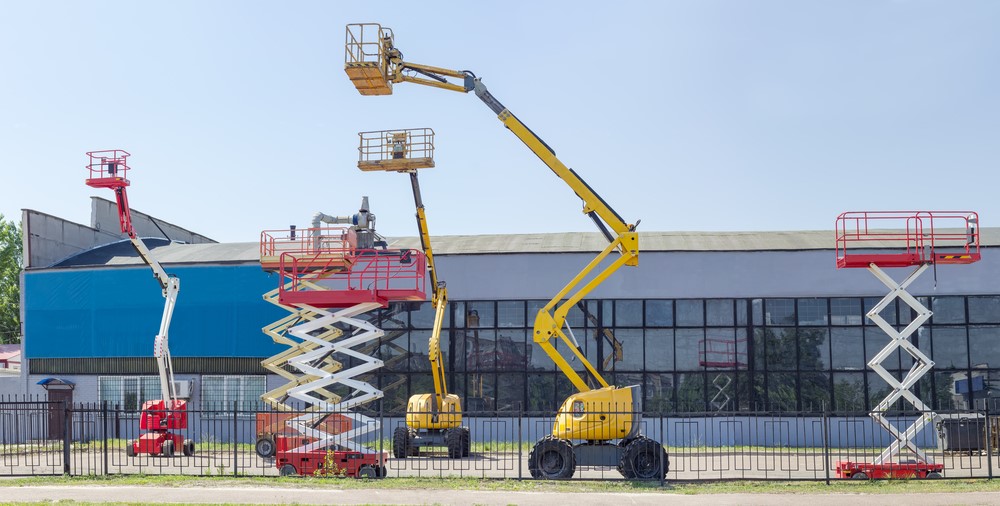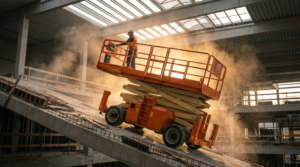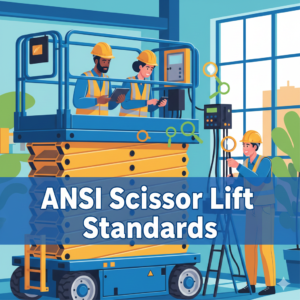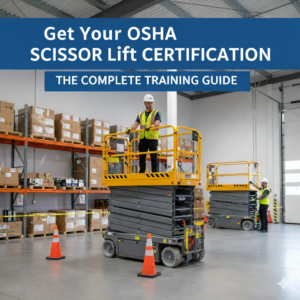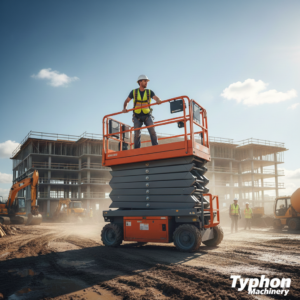Aerial lifts are an essential tool for various industries, providing flexibility and mobility that ladders and scaffolding cannot. However, they come with inherent risks that need to be managed carefully. This article covers essential aerial lift safety tips for operators, managers, and pedestrians.
What Is an Aerial Lift?
Aerial lifts are preferred on job sites for their flexibility and mobility. OSHA defines an aerial lift as any vehicle-mounted device used to elevate personnel, including extendable boom platforms, aerial ladders, articulating (jointed) boom platforms, and vertical towers. It is important to note that scissor lifts are not included in this definition and are considered scaffolding.
What Are Aerial Lifts Used For?
Aerial lifts help people and equipment reach heights that other machines cannot. They are used in various industries such as:
- Construction
- Building maintenance
- Safety inspections
- Electric or telephone line repair
Common Aerial Lift Hazards
Aerial lifts present several hazards, including:
Electrocution
Contact with power lines or electrical wires can result in severe electric shocks.
Falling Objects
Tools or materials falling from the lift can cause serious injury or death to those below.
Tip-Overs
Aerial lifts become less stable as their height increases, increasing the risk of tip-overs due to obstacles like debris or uneven terrain.
Falling from Height
Operators can be ejected from the platform if they are not wearing a harness or if the harness is not properly secured.
Learn More: MAINTENANCE TIPS AND COSTS FOR SCISSOR LIFTS
Structural Failures
Structural failures can occur if the machine is defective or overloaded, causing the lift to collapse.
Entanglements
Moving parts like cords, chains, and pulleys can create pinch points and entanglements.
Collisions
Collisions often happen in high-traffic areas or when contact is made with overhead obstructions.
15 Aerial Lift Safety Tips
1. Know the Rules
Adhere to OSHA and ANSI safety regulations for aerial lift usage and handling.
2. Ensure Employee Training
Only trained and authorized personnel should operate aerial lifts. Training should cover hazard recognition, safe operating procedures, and emergency actions.
3. Be Vigilant Around Power Lines
Always inspect the work area for power lines and treat them as energized. Maintain a minimum clearance of 10 feet and use insulated aerial lifts.
4. Watch Out for Pedestrians
Implement traffic control measures such as warning signs, safety cones, and barricades to protect pedestrians.
5. Inspect Your Work Zone
Before operating the lift, inspect the work zone for hazards like unstable surfaces, overhead obstructions, and severe weather conditions.
6. Watch Your Overhead While Raising
Be aware of overhead obstructions such as ceilings, pipes, and power lines to avoid being pinned.
7. Wear Fall Protection
Operators should wear body harnesses attached to the lifting platform to reduce the risk of injury in case of a fall.
8. Be Aware of Slopes
Avoid using the lift on slopes. If necessary, ensure the lift is rated for slopes and follow safety guidelines for navigating inclines.
9. Watch Out for Falling Objects
Secure tools and materials to prevent them from falling and causing injury to those below.
Learn More: SCISSOR LIFT SAFETY FEATURES AND CERTIFICATIONS
10. Check the Weight Limit
Do not exceed the manufacturer’s maximum weight capacity for the lift, including the operator, tools, and materials.
11. Never Use an Aerial Lift as a Crane
Aerial lifts are designed to elevate personnel and tools, not to lift heavy loads.
12. Inspect Before Operating
Conduct a pre-start inspection before every work shift to ensure the lift and its components are in good operating condition.
13. Keep Up on Maintenance
Regular maintenance is crucial for keeping the lift in safe operating condition and extending its lifespan.
14. Check the Wind Speed
Be aware of wind conditions and avoid operating the lift if the wind speed exceeds the manufacturer’s recommended limit.
15. Never Disable Safety Features
Do not alter or disable any of the lift’s safety devices without the manufacturer’s authorization.
Conclusion
Aerial lift safety is paramount for preventing accidents and injuries on the job site. By following these safety tips and adhering to OSHA and ANSI regulations, operators, managers, and pedestrians can work safely around aerial lifts.

